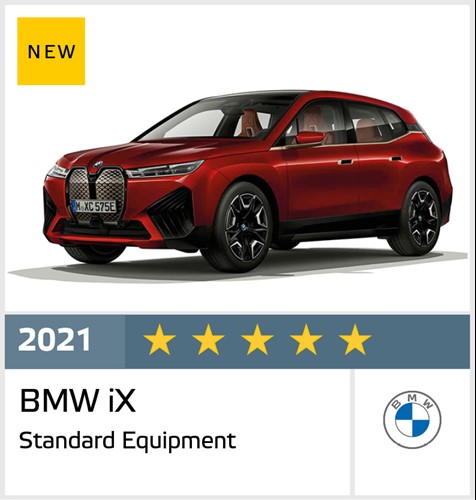Euro NCAP announces its final safety ratings for 2021, covering the spectrum from best to worst that the automotive industry has to offer across all vehicle categories. Of eleven new models tested, seven achieved a top rating of five stars, including the BMW iX, the Genesis G70 and GV70, the Mercedes-EQ EQS, the Nissan Qashqai, the koda Fabia and the Volkswagen Caddy. MG’s electric FIAT 500e and Marvel R also did well, receiving 4 stars each. The year ends with a downer, however, as Dacia Spring and Renault’s revised electric ZOE only qualified for one star or zero stars and thus perform even worse than expected.
The 5-star winners in this batch range from affordable supermini and small MPVs to high-end, luxury-class electric cars. Despite different drive trains and price ranges, all five-star vehicles performed very well in terms of crash protection and crash avoidance. Outstanding achievements are the new Nissan Qashqai in the area of safety assistants and the Mercedes EQS for occupant protection of adults and children. FIAT’s electric super mini, the 500e and the brand new MG Marvel R, both performed strongly and achieved commendable four-star ratings.


Michiel van Ratingen, Secretary General of Euro NCAP, says:
“Bravo to these manufacturers for offering consumers the level of safety they expect. These results make it clear once again that safety is about good technology and less about the type of drive or the price itself. “


With consumers being pushed from all sides to switch to battery electric cars, it is not surprising that some automakers are launching cheaper products that can appeal to a wider audience. Renault was one of the first to successfully enter the market with the popular ZOE launched in 2013. The “new” ZOE, a facelift introduced in 2020, received several battery improvements but no added security. In contrast, the seat-mounted side airbag, which previously protected the head and chest, has been replaced by a less effective thorax-only airbag, which represents a deterioration in occupant protection. Overall, the new ZOE offers poor protection in the event of accidents, poor protection for unprotected road users and there is no useful technology for accident prevention that would disqualify it from all stars.
Unfortunately, things don’t look much better for Renault’s no-frills sub-brand Dacia. The all-electric Spring, marketed as a brand new vehicle, is heavily based on the Chinese-made Renault City K-ZE, which is itself a derivative of the annoying Renault Kwid, sold in India and Brazil for several years. Dacia has convinced supporters all over Europe: car buyers who appreciate the low entry-level prices and who stay away from “useless features” in their car. But with Spring, the “masters of economical engineering” have brought a product onto the market that goes beyond simplicity. Its behavior in crash tests is downright problematic, with a high risk of life-threatening injuries to the driver’s chest and the front passenger’s head in frontal crash tests and a marginal chest protection in a side impact. The mediocre crash performance and poor crash avoidance technology lead to a star rating for Dacia Spring.
Michael van Ratingen comments:
“Renault was once synonymous with safety. The Laguna was the first car to receive five stars in 2001. However, these disappointing results for the ZOE and Dacia Spring show that safety has become collateral damage as the group moves to electric cars. Just a few months ago, Dacia claimed that they are “busy improving safety for those on board” and that their cars have always improved passenger safety (see Autocar). That is clearly not the case: Not only do these cars not offer any noteworthy active safety as standard, their occupant protection is also poorer than any vehicle that we have seen for many years. Offering an affordable green car to the consumer is cynical when it comes to the price of a higher risk of injury in an accident. Other cars like the FIAT 500e, which was recently awarded 5 stars in the Green NCAP, show that safety does not have to be sacrificed for environmental cleanliness. “
Rikard Fredriksson, TRAFIKVERKET’s vehicle safety advisor in Sweden says:
“The Euro NCAP tests show the significant differences that arise when a decision is made not to increase the safety level of a vehicle kept in production. The airbag downgrade by the manufacturer is particularly alarming if his vehicle has undergone a facelift in other non-safety-relevant areas. In this press release we see examples of electric cars with similar price levels but remarkably different levels of safety. “
In this press release, Euro NCAP also reviewed five new hybrid and electric variants of cars that were evaluated in previous years. the Audi A6 PHEV that Range Rover Evoque PHEV that MAZDA 2 Hybrid share the 5-star ratings of 2018, 2019 and 2020. The Mercedes-EQ EQB is covered under the GLB 2019 five-star rating and the brand new Nissan rating City star, Twin of the Renault Kangoo, shares this car’s four-star rating from earlier this year.
SOURCE: Euro NCAP

